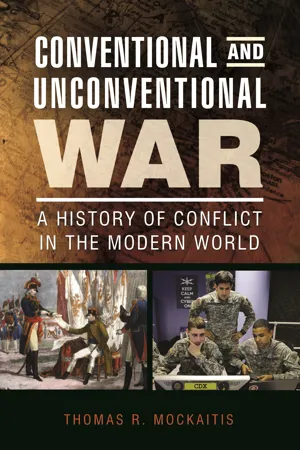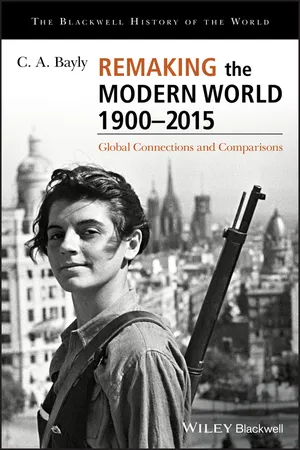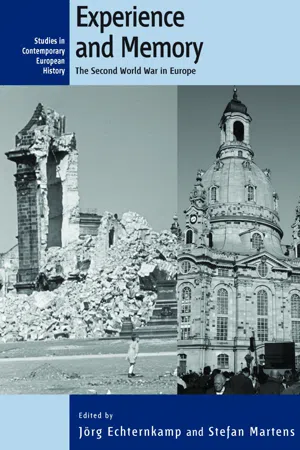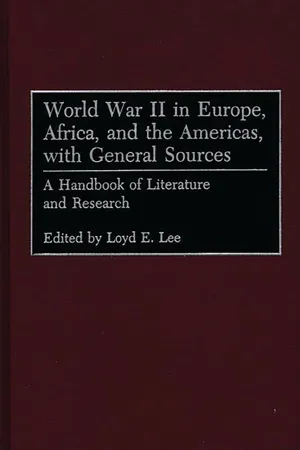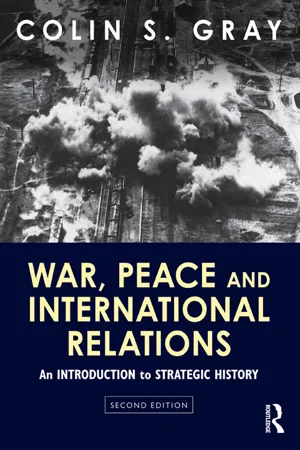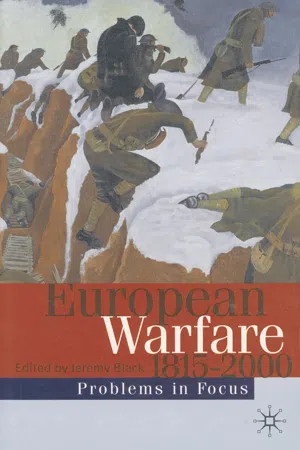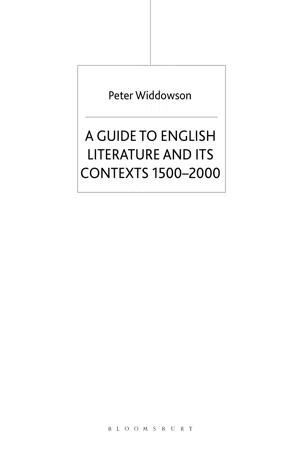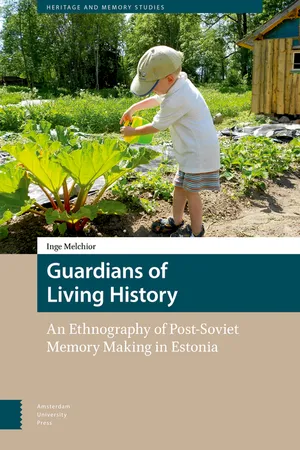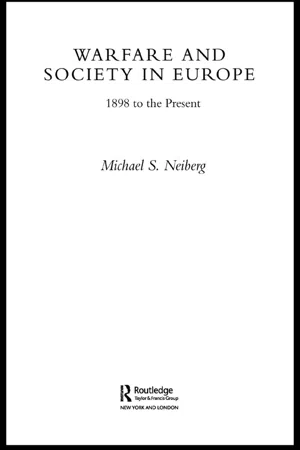History
Europe WWII
Europe during World War II was a period of widespread conflict and devastation, characterized by the rise of totalitarian regimes, the invasion of Poland, the Battle of Britain, the Holocaust, and the eventual defeat of Nazi Germany. The war had far-reaching consequences for the continent, leading to significant geopolitical and social changes that continue to shape Europe to this day.
Written by Perlego with AI-assistance
Related key terms
1 of 5
11 Key excerpts on "Europe WWII"
- eBook - ePub
Conventional and Unconventional War
A History of Conflict in the Modern World
- Thomas R. Mockaitis(Author)
- 2017(Publication Date)
- Praeger(Publisher)
CHAPTER TEN World War II in EuropeAlthough the Great War has been retroactively dubbed a “world war,” most of the fighting took place in Europe. Indeed, during the interwar period American libraries catalogued books on the subject under the heading, “European War, 1914–1918.” World War II, on the other hand, was a truly global conflict. It involved 1.7 billion people (three-quarters of the earth’s population) from 61 countries and was fought in locales ranging from jungle atolls in the South Pacific to the snow-covered steppes of Russia.1 In addition to being more extensive, World War II was far more lethal than its predecessor. The increased destructive power of weapons, especially bombs, combined with virulent ideologies, whose intensity had not been seen since the wars of religion three centuries earlier, made the conflict the deadliest in human history. It claimed the lives of 60 million people, three quarters of them civilians.2 When the belligerents saw each other not as soldiers in opposing armed forces, but as members of alien races bent on one another’s destruction, they made no distinction between combatant and noncombatant, man, woman, or child, old or young. World War II completed the evolution toward total war.BlitzkriegOn September 1, 1939, two German army groups invaded Poland from three directions: north from East Prussia, northwest from Pomerania, and southwest from Silesia and occupied Czechoslovakia. In a week they had broken the back of Polish resistance and were driving toward Warsaw, which capitulated on September 28 after savage bombing. The Soviets, who invaded from the east on September 17 per an agreement with the Germans that also gave them the Baltic States, contributed nothing to the German victory but took their share of the spoils. Reporting on the campaign, Time magazine gave a new word to the English language:This was no war of occupation, but a war of quick penetration and obliteration—Blitzkrieg, lightning war. Even with no opposition, armies had never moved so fast before. Theorists had always said that only infantry could take and hold positions. But these armies had not waited for the infantry. Swift columns of tanks and armored trucks had plunged through Poland while bombs raining from the sky heralded their coming. They had sawed off communications, destroyed stores, scattered civilians, spread terror. Working sometimes 30 miles ahead of infantry and artillery, they had broken down the Polish defenses before they had time to organize. Then, while the infantry mopped up, they had moved on, to strike again far behind what had been called the front. By week’s end it mattered very little whether Warsaw stood or fell. The Republic of Poland, aged 20, was lost.3 - eBook - ePub
Remaking the Modern World 1900 - 2015
Global Connections and Comparisons
- C. A. Bayly(Author)
- 2018(Publication Date)
- Wiley-Blackwell(Publisher)
Nearly two million Indian soldiers fought in the British armies, not only against the Japanese but in North Africa and Europe. By the end of the war, well-trained African troops from the Gold Coast and Kenya under British command had joined the fighting in Burma. As the German submarine threat decreased by the middle of 1943, American and British ships could support the British homeland population. Supplies from Australasia continued to feed the embattled population. Even though it was defeated in Europe, the French government in exile could draw on resources from Indochina and West Africa. Germany, of course, dominated much of Europe in the early stages of the war, but later, as the USSR moved to the offensive and as Italy was reconquered by the Allies, its resources were gradually cut back and then systematically destroyed. One of the problematic features of historical teaching and research was its long-sustained division between “European”, “imperial” and “American” history. It is not possible to understand the outcome of the First World War without taking account of empire and the wider world. That is even truer of the Second World War.The Climax of the World Crisis, 1942–1948: Part III
The narrative of the last stages of the Second World War is well known beyond academia, not least because of the plethora of dramatic Hollywood movies and constantly recycled television programmes.28 As a result of the caution of Churchill's government about the invasion of Europe from the north, the Allies first landed in Sicily and fought their way with great difficulty up the Italian peninsula, delayed with large casualties at Monte Cassino south of Rome. In June 1944, after the Americans had built up their forces in England, a huge amphibious landing took place in Normandy, deceiving the Germans, who had believed that the assault would be further east. Slowly, the Allies reconquered France supported by Charles de Gaulle, leader of French troops from the colonies that had avoided occupation and the few who had joined him in Britain in 1940. The Allies finally entered Paris in September, signalling the last stage of the war. Over the autumn and winter of 1944, British, American, Polish and French troops pushed northeast against the German defences, held up once again by fierce German resistance in the Ardennes. By the beginning of 1945, with many German cities reduced to rubble by continuous Allied bombing, culminating in the destruction of Dresden and tens of thousands of its citizens, the Allies stood on the threshold of Germany itself.29Meanwhile in Eastern Europe, the Armageddon of Soviet–Nazi conflict had taken place. As early as December 1941 – ironically, only two days after the Japanese attack on Pearl Harbor – the Soviet army launched a massive counter-attack against the hitherto victorious Germans near Leningrad. Over the next year, they pushed back against their enemies and gradually destroyed them after the unparalleled standoff at Stalingrad.30 - eBook - ePub
Experience and Memory
The Second World War in Europe
- Jörg Echternkamp, Stefan Martens, Jörg Echternkamp, Stefan Martens(Authors)
- 2010(Publication Date)
- Berghahn Books(Publisher)
The Europe-discourse of German expatriates, for example, changed fundamentally in 1938/39. Until then, the experiences of the Weimar Republic had shaped rather vague notions of “Europe.” The Munich Agreement, the Hitler–Stalin Pact, and last but not least the World War as well as precursors to a bipolar world order led to a systematic discourse on Europe which distanced itself from the National Socialist ideas of a racially determined continent. 18 After the end of the war, this discourse would have continuing effects on the ideology of the “occident.” 19 The European historiography that conceives Europe as a whole and depicts culture and progress as intrinsic values of a European culture, was time and again directly related to experiences of extreme crisis: during the First World War, the 1930s, and finally the Second World War. In 1944/45, the title of Lucien Febvre's inauguration speech at the recently liberated Collège de France was “L'Europe. Genèse d'une civilization.” 20 Moreover, European works of history were part of the ideological battle of Western democracies against National Socialism and Fascism, first and foremost The Unity of European History, which John Bowle had written in large parts during the war. 21 In the postwar era, especially after the founding of European institutions, European histories were written with teleological intent. They were supposed to bear witness to the path toward European unity, which had already been laid out and traveled in the past. Entirely in the narrative style of the older national histories, the historical roots of a collective (national or European) identity were to be laid bare, and the lines of continuity purportedly dating back centuries drawn into the present - eBook - ePub
- John Mueller(Author)
- 2013(Publication Date)
- Cornell University Press(Publisher)
CHAPTER 4
WORLD WAR II AS A REINFORCING EVENT
Europeans brought war under a degree of control in the middle of the last millennium with the development of disciplined military and policing forces and with the consequent rise of coherent states. But they still considered it to be a natural, inevitable and, often, desirable fact of life. After the trauma of World War I, they moved to use their control of war to eliminate the institution entirely from their affairs with each other.Since that war, countries in the developed world have participated in four wars or kinds of war: first, the cluster of wars known as World War II; second, wars relating to the Cold War; third, various wars in their colonies; and fourth, still to be defined and delimited, policing wars: assorted applications of military force after the Cold War to pacify civil conflicts and to topple regimes deemed harmful. The second and third of these are taken up in the next chapter, and the fourth is the central subject of chapters 7 and 8.This chapter deals with the first. It surveys the aggressor states that launched World War II, and it concludes that, but for the machinations of one man—Adolf Hitler—the Second World War in Europe would likely never have come about. It also explores the implications of this conclusion, and it assesses the impact of World War II on the developed world’s developing sense of war aversion.THE QUEST FOR PEACE AFTER THE GREAT WAR
The Great War (as it was to be called for more than two decades) chiefly inspired bitterness, disillusionment, recrimination, and revulsion in Europe. For the most part, war was no longer embraced as supreme theater, redemptive turmoil, a cleansing thunderstorm, or an uplifting affirmation of manhood. It was what the first modern general, William Tecumseh Sherman, had called it a half century earlier: hell. People who often had praised war and eagerly anticipated its terrible, determining convulsions now found themselves appalled by it. Within half a decade, war opponents, once a derided minority, had become a decided majority: everyone now seemed to be a peace advocate.1 - eBook - ePub
Western Civilization: A Global and Comparative Approach
Volume II: Since 1600
- Kenneth L. Campbell(Author)
- 2015(Publication Date)
- Routledge(Publisher)
The Nazi war against Poland indicated that this next war would represent something fundamentally different from previous wars, even the horror-filled experience of World War I. This war would be waged not just between armies fighting for territorial advantage, but between countries and military leaders who sought to devastate civilian populations in order to weaken the enemy nation’s determination to fight, or—as happened later—to avenge previous atrocities committed by the enemy. During the invasion of Poland, German pilots dropped bombs on towns, villages, and fields, in addition to specific military targets. Refugees fleeing their burned-out homes experienced machine gun fire from low-flying planes passing overhead. Anyone, including women and children, who ventured outside of Warsaw during the German siege risked being spotted and shot at from German planes patrolling the area. Entire towns—of no military significance whatsoever—disappeared from the map, their inhabitants shot while attempting to flee. Ground troops indiscriminately selected people for execution, including children as young as two years old. The Poles, who had spread their inadequate defenses too thin because they also had to worry about an attack from the Soviet Union to the east, quickly succumbed to the Nazi onslaught. Hitler did not think that Britain and France would go to war over a land that was so firmly in his grasp, especially with the Soviet Union neutralized and anxious to add the Baltic states of Latvia, Estonia, and Lithuania and part of Poland to its own territory. But go to war Britain and France both did, beginning the fight that would turn into World War II.World War II marked the end of one era and shaped the beginning of a new one. It occurred in the middle of the bloodiest century in human history and has come to symbolize the horrors of the age. It began in Europe, but soon involved Asia and the Pacific Ocean as well. The United States entered the war when the Japanese attacked the US naval base at Pearl Harbor without warning on December 7, 1941. Instead of presenting a detailed chronological narrative, this chapter considers the origins of the war in Europe and in the Pacific before examining some key topics that reveal the nature, scope, and course of the war. (For a more detailed narrative consult Suggestions for Further Reading on page 323.) This chapter will examine the impact that the war had at the time, including Hitler’s attempt to exterminate the Jews of Europe in the Holocaust and the decision of the United States to use atomic bombs in the war against Japan. Finally, the chapter will discuss the impact of the war in other parts of the world and some of the key developments and realities of the postwar period. Chief among these was the beginning of the Cold War between the United States and the Soviet Union, which were allies during World War II. - eBook - PDF
World War II in Europe, Africa, and the Americas, with General Sources
A Handbook of Literature and Research
- Loyd Lee(Author)
- 1997(Publication Date)
- Greenwood(Publisher)
As she noted, many Western European countries emerged from the war with mass social welfare systems, unprecedented migration, increased consum- erism, and unparalleled state management of economies, though individ- ual national differences persisted. Whether this is a consequence of the war or of other deeper developments in modern society has yet to be determined. BIBLIOGRAPHY Also see the chapters on ‘‘German Occupation of Europe,’’ ‘‘Resistance Move- ments in Europe,’’ ‘‘Comparative Economic Mobilization,’’ ‘‘The Domestic Impact of War and Occupation on Germany,’’ and ‘‘Women in World War II.’’ Abse, Toby. ‘‘Italy.’’ In Jeremy Noakes, ed., The Civilian in War: The Home Front in Europe, Japan and the U.S.A. in World War II, 104–25. Exeter, U.K.: University of Exeter, 1992. Adams, Michael C. C. The Best War Ever: America and World War II. Baltimore: Johns Hopkins UP, 1994. Addison, Paul. The Road to 1945: British Politics and the Second World War. London and New York: Quartet Books, 1975. Allen, Gwenfread E. Hawaii’s War Years, 1941–1945. Westport, CT: Greenwood, 1950. 362 War and Society Andrzejewski (Andareski), Stanislav. Military Organization and Society. London: Rou- tledge, 1954; Berkeley: University of California, 1968. Aster, Sidney, ed. The Second World War as a National Experience. Ottawa: Canadian Committee for the History of the Second World War, 1981. Bailey, Beth, and David Farber. The First Strange Place: The Alchemy of Sex and Race in World War II Hawaii. New York: Free, 1992; Baltimore: Johns Hopkins UP, 1994. Barber, John, and Mark Harrison. The Soviet Home Front: A Social and Economic History of the USSR in World War II. London and New York: Longman, 1991. Barnett, Corelli. The Audit of War: The Illusion and Reality of Britain as a Great Nation. London: Macmillan, 1986. Beck, Earl R. The European Home Fronts, 1939–1945. Arlington Heights, IL: Harlan Davidson, 1993. Be ´darida, Francois. - eBook - ePub
War, Peace and International Relations
An introduction to strategic history
- Colin S. Gray(Author)
- 2013(Publication Date)
- Routledge(Publisher)
10 World War II in Europe, I The structure and course of total war Reader's guide : Casualties. The wars that comprised World War II. A strategic narrative of the war. The Holocaust. Introduction: total war The actuality or the threat of war was by far the most important influence on international relations in the twentieth century. Its outcomes reshaped societies and enforced regime changes, added and deleted states to and from the geopolitical map, and accelerated the long process of global decolonization. Warfare, its memories, legends, myths and consequences of all kinds, virtually defined the European experience in the century. Two total wars dominated the first fifty years, while the threat of a potentially total nuclear war overhung, even dominated, all but ten of the second. World War II brought casualty figures to new heights. If one includes the Sino-Japanese War that began in 1937, the total death toll in the war was of the order of 53.5 million. That figure has to be suspect in detail, but it is reliable as to order of magnitude. Whereas in 1914–18 the belligerents mobilized some 65 million men for military duty, in 1939–45 the comparable figure was 105 million, a fraction of whom were women. Also, unusually in modern times, the civilian death toll exceeded the military, and by a wide margin (perhaps 36.5 million to 17 million; see Table 10.1). There were three principal reasons why this was the case. First, the growing maturity of air power guaranteed that civilians would be targets, both inadvertently, as collateral damage, and intentionally, as required by the new doctrine of seeking victory, or at least to coerce, by strategic air power. Second, everywhere, even eventually in Germany following the defeat at Stalingrad in the winter of 1942–3, the war was explained and conducted as a ‘people's war’: everybody was at war - eBook - PDF
- Jeremy Black(Author)
- 2017(Publication Date)
- Red Globe Press(Publisher)
5. The Second World War, 1939-45 S. P. MACKENZIE The 'twenty years peace' that separated the two world wars allowed soldiers and statesmen time to draw lessons from the Great War experience as well as to forecast ways in which technological and other changes would alter the nature of any future conflict fought on a similar scale. The opening campaigns of the Second World War would demonstrate the degree to which the great powers had correctly or incorrectly anticipated the shape of things to come, as later campaigns would show their capacity to learn from mistakes and adapt in the face of new realities. The ear-lier struggle had already demonstrated the extent to which European warfare had become 'total' in terms of the harnessing of all the human and material resources of the modem industrial state to the war effort. If anything, the course of this new round of continental conflict would involve even more comprehensively integrated national exertions. For the purposes of study, how-ever, warfare in the Second World War in Europe can be divided -albeit somewhat artificially -into eight forms or types. There were, to begin with, regular ground operations, con-ducted with or without air support and in some instances dependent on the success of amphibious or airborne operations . Land operations can be divided both chronologically and struc-turally between the years of German-led Axis dominance and the years of the eventually crushing Allied and Soviet response. There were also irregular low-to-medium intensity campaigns fought behind the front . In several cases there were strategic air campaigns designed to alter the course of the war. All the warring states undertook psychological operations designed to buttress or undermine the will to win, and engaged in intelligence-gathering and deception campaigns. Then there were the efforts to combine available resources, both human and material, into an all-out war effort. Last but not least there was warfare as grand 126 - eBook - PDF
- Peter Widdowson(Author)
- 2017(Publication Date)
- Red Globe Press(Publisher)
1940–1959 World War II and the Post-War Period INTRODUCTION The present chapter deals with the two decades of the 1940s and 1950s – a period obviously dominated by the Second World War* and its aftermath, but with a strong sense through the 1950s, especially amongst the younger generation, that Post-War* exhaustion should give way to excitement, provocation, non-conformity and rebellion. [Suggested timeline narratives for the whole period are appended after the gloss on (The) Post-War (Period)* .] Chapter contents 7.1 The Second World War / World War II (WWII) 194 7.2 (The) Post-War (Period) 196 Key Timeline Narratives 1940–1959 196  The UK in Wartime  The Post-War International Context  UK Politics  The Welfare State, Social Issues and Education  Science and Technology  The Cultural Context: • Television • Theatre Timelines: 1940–1959 200 7.1 THE SECOND WORLD WAR / WORLD WAR II (WWII) The war between the the Allied Powers (initially France and Great Britain, later joined by the USA and the USSR) and the Axis Powers (Italy and Germany, later joined by Japan) from 1939 to 1945. The historical process which led to the outbreak of war (France and Britain declared war on Germany on 3 September 1939) is covered by the gloss on the Inter-War Period* in Chapter 6. But in brief, it was determined by German resentment over the draconian terms of the Treaty of Versailles (1919) at the end of World War I* [Chapter 6]; the world economic crisis of 1929–30; the rise to power of a Fascist state in Italy under Mussolini throughout the 1920s and 1930s; the rise to power of the Nazi regime in Germany under Hitler from the early 1930s; the failure of the League of Nations (especially France and Britain) actively to police the peace; the illegal but 7 - eBook - PDF
Guardians of Living History
An Ethnography of Post-Soviet Memory Making in Estonia
- Inge Melchior(Author)
- 2020(Publication Date)
- Amsterdam University Press(Publisher)
6 WWII on the Periphery of Europe: A Contested Chapter Abstract Chapter 6 introduces Europe as a signif icant Other to the stage, and with that the memory of WWII. In times of East-West memory clashes in Europe, the emotional Estonian story easily stirs up feelings of insecurity, facing the perceived hegemonic and incontestable European WWII narrative. The lack of a Holocaust memory and the memory of Estonian men in SS uniforms as freedom fighters evokes the fear of being misunderstood and subordinate within Europe. They feel torn between the moral obligations towards their (grand)parents and their wish to be seen as ‘full Europeans’. Within the European family the lack of closure and of a settled Estonian history makes the struggle with ‘European memories’ feel very unequal, painful, and vulnerable. Keywords: European memory, memory of World War Two (WWII), moral obligation towards (grand)parents, competition of victimhood, memory and power, lack of a Holocaust memory A bus from Latvia had come to pick me up in Tartu that morning. It was late July 2010. This was a time of long sunny days, and short nights. After a three-hour drive from the south of Estonia to the north-east, we were approaching our destination: the commemoration site Sinimäed (‘Blue Hills’). In 1944, important battles between the Nazi and Soviet army had taken place here. The Nazi army, supported by thousands of Estonian soldiers, had managed to halt the Soviet of fensive, enabling 80,000 Estonians to flee to Western countries (Salo, 2005, p. 19). I was invited to this ‘very interesting commemoration’ by one of the organizers of the national ‘Day of Mourning’ in Tartu. After spending hours writing emails, I eventually managed to find a ride on this private, Latvian bus: one half filled with Latvian teenagers, the other with Latvians interested in history. - eBook - ePub
Warfare and Society in Europe
1898 to the Present
- Michael S. Neiberg(Author)
- 2003(Publication Date)
- Routledge(Publisher)
7WAR AND SOCIETY IN EUROPE, 1945–1989
Reckoning with World War II
Shortly after V-E Day, Winston Churchill summed up the meaning of the end of the war in the eloquent manner to which millions of Europeans had become accustomed. His words reveal the ambivalence with which many Europeans looked at their future and therefore they deserve long quotation:I wish I could tell you that our toils and troubles were over. … On the continent of Europe we have yet to make sure that the simple and honorable purposes for which we entered the war are not brushed aside or overlooked in the months following our success, and that the words “freedom,” “democracy,” and “liberation” are not distorted from their true meaning as we have understood them. There would be little use in punishing the Hitlerites for their crimes if law and justice did not rule, and if totalitarian or police Governments were to take the place of the German invaders. … I told you hard things at the beginning of these last five years; you did not shirk, and I should be unworthy of your confidence and generosity if I still did not cry: Forward, unflinching, unswerving, indomitable, till the whole task is done and the whole world is safe and clean.1Churchill had good reason for curbing his enthusiasm. Allied victory had destroyed Nazism, but it also had left the continent in almost as dangerous a state in 1945 as in 1939. The physical devastation alone was almost incomprehensible. The war left such a wake of destruction in its path that exact statistics are nearly impossible to calculate, even sixty years later. In 1945 Europe had to reckon with millions of dead, millions of refugees, an industrial infrastructure in ruins, and serious shortages of housing and food. Brian Bond’s estimate of 11,000,000 refugees (called “displaced persons” in the official lexicon) seems a reasonable estimate, although even that figure may be too low.2
Index pages curate the most relevant extracts from our library of academic textbooks. They’ve been created using an in-house natural language model (NLM), each adding context and meaning to key research topics.
